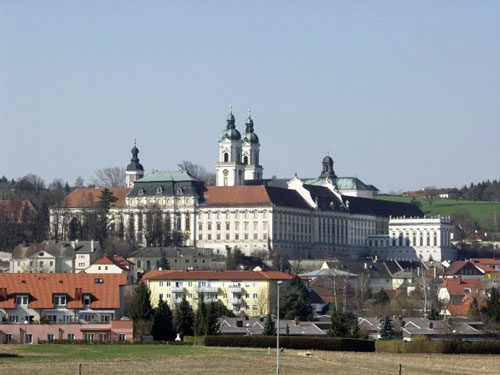|
|
|
| |
Stern & Hafferl - Page 2
All images link to larger
copies which will open in a new window/tab
|
|
|
This page shows images of the 900mm narrow gauge
electric railway/tramway which connected the towns of Ebelsberg to St
Florian. Ebelsberg later joined the Linz tramway system but through running
was not used. The railway/tramway was operated by Stern und Hafferl who ran
numerous local electric railways in Upper Austria, supplied from the power
stations which were their main enterprise. It closed in 1974 but was
re-opened later as a museum line, which I visited in 1989. Operations were
later suspended and the future does not look bright.
|
|
|
|
|
|
| |
|
|
Lokalbahn Ebelsberg-St Florian Seit 1913 - ÖGEG - 1988
|
|
|
|
|
Strassenbahn Ebelsberg-St Florian
Stern & Hafferl - Page 2
All images link to larger
copies which will open in a new window/tab
The Strassenbahn Ebelsberg-St.
Florian, also called the Florianerbahn, was an interurban tramway in Upper
Austria. It ran from 1913 and 2013 is its centenary. It was originally
licensed as a narrow gauge branch line between the formerly independent
municipality of Ebelsberg (now a suburb of Linz ) and St Florian. Owner was
Stern & Hafferl who still run a selection of small electric railways in
Upper Austria. The railway was later re-designated as a tramway
(Strassenbahn).
The track gauge was 900 mm like that of the Linz tram
and it was electrified at 600 volts DC. Regular operation lasted from 2
September 1913 until the end of the 1973, just a the year before my first
visit to Linz in 1974. From 1929, Ebelsberg was also directly connected to
the Linz tram network. Through running into Linz from St Florian was
considered, but the Stern & Hafferl railcars were too wide. Linz trailers
were sometimes worked through to St Florian however, and through ticketing
was available.
The tramway closed in 1973 with final special trains in January 1974. It was
taken over by the Österreichische Gesellschaft für Eisenbahngeschichte
(ÖGEG) and partially reopened as the Museumbahn St Florian. I visited it in
August 1989 and the images below are from this date.
The tramway began operation in 1913 with three small
4-wheel trams numbered EM1-3, supplied by Graz Waggonfabrik in 1912. Tram
EM2 was scrapped in 1975, after the closure of the tramway in 1973. Trams
EM1 & 3 passed to the ÖGEG and No.1 was running on my 1989 visit. Other
operational trams on the Museumbahn included one from Gmunden and one from
the Pöstlingbergbahn.
Five matching Graz trailers numbered EP1-5 were delivered in 1912-13. EP1-3
were renumbered EB20224, EB20222 and EB20223 in 1974 and moved elsewhere
within the Stern & Hafferl organisation. I photographed EP!, regauged to a
metre, on the Attergaubahn.
There were also two goods vans, latterly numbered E 501 & 521 also built by
Graz. A third van E502 was built by Stabeg in 1946. All three vans were
scrapped in 1974 after the closure of the tramway in 1973.
A ride on the tramway
On my visit in 1989 it was necessary to catch a bus
from the Ebelsberg terminus of the Linz tramway (since extended) to Pichling
since the Florianerbahn had been breached by a new road. The route of the
railway was visible from the bus, complete with overhead, running parallel
to the road and separated by a few metres of grass. The were no facilities
whatsoever at the Pichling terminus, the tracks just ended in a field. A
couple of trailers stored there were the only sign that it was the
'station'. They would have been vandalised in days if left out like that in
the UK (although the copper overhead of the closed Museumbahn was stolen in
2011). Three trams were in service, St Florian No.1, Gmunden No.7 and
Pöstlingbergbahn XIII.
These were listed in the guide book as the only operable trains. Other trams
awaiting restoration existed, including some Linz two-axle vehicles and
trailers which were outside.
Pöstlingbergbahn XIII soon turned up at Pichling and we boarded it for the
painfully slow journey to Ebelsberg. I do not recall any other passengers.
The track state was appalling and the tram felt as if it might derail at
each rail joint as we lurched along at barely above walking pace. Some
sections appeared to have been re-laid and were a little better. Indeed,
work was under way at the Pichling terminus to extend track towards
Ebelsberg.
At St Florian we photographed the rolling stock scattered around and then
visited the famous abbey. As we entered the abbey church the somebody began
practising on the impressive organ - amazing to hear the instrument played
by Anton Bruckner who had been the organist here. When we returned to the
tram terminus, St Florian 1 and Gmunden 7 had been prepared for use. Of
course we travelled on the original No.1, and the two trams travelled in
convoy on the arduous trip back to Pichling. There was a handful of
passengers waiting there. The connecting bus had been missed so we walked
back to Ebelsberg in blistering heat. It had been a bizarre experience.
Stern & Hafferl Rolling Stock
EM 1-3
The tramway began operation in 1913 with three small
4-wheet trams numbered EM1-3, supplied by Graz Waggonfabrik in 1912. Tram EM
2 was scrapped in 1975, after the closure of the tramway in 1973. Trams 1 &
3 passed to the ÖGEG and No.1 was running on my 1989 visit to the Museumbahn
St Florian (Florianerbahn).
Postcards of the Florianerbahn
in Stern & Hafferl days
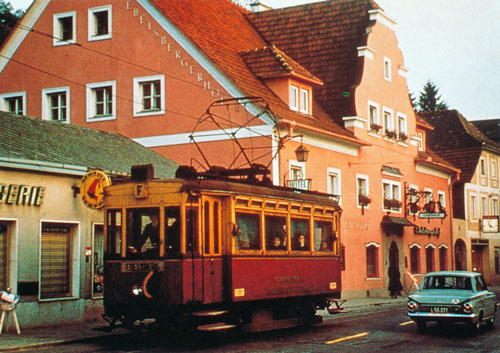
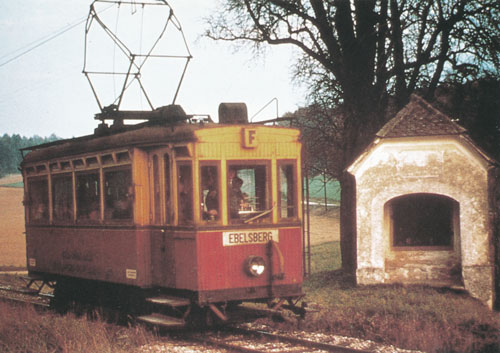
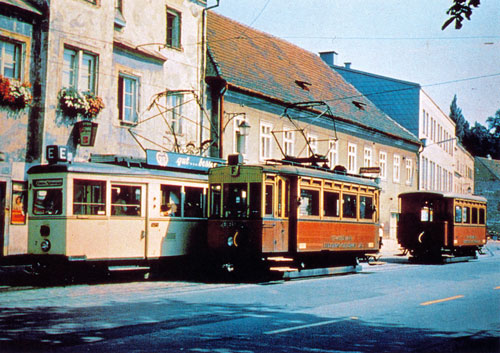
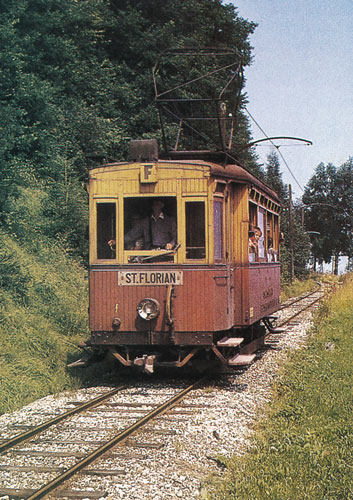
Postcards of the Florianerbahn
in Museumbahn days
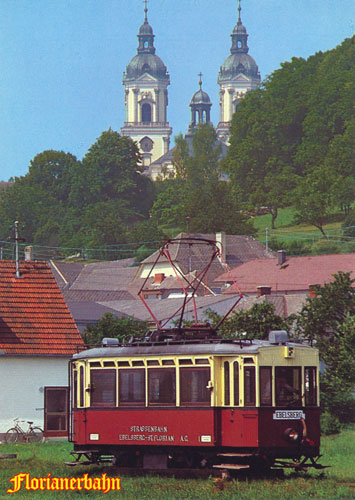
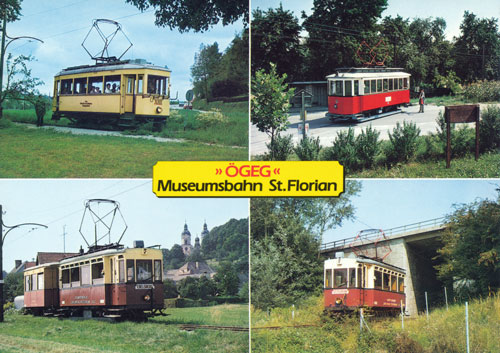
Tram EM 1 on the Florianerbahn
at the St Florian terminus
Photos: ©1989 Ian & Margaret Boyle
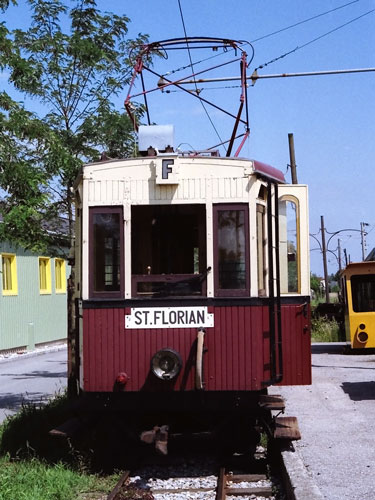
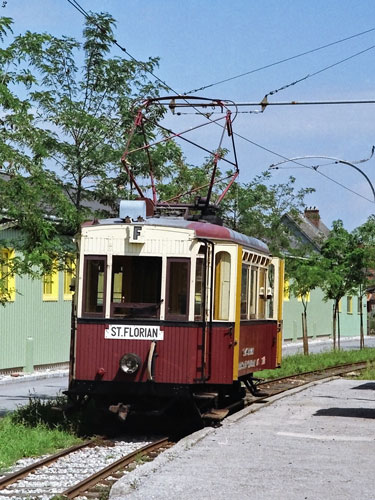
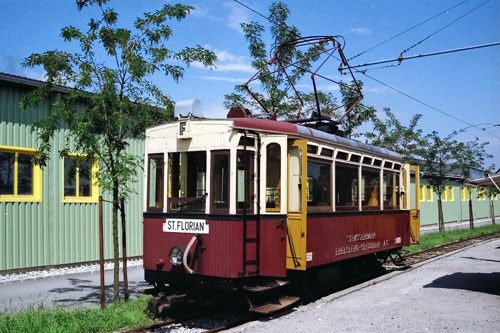
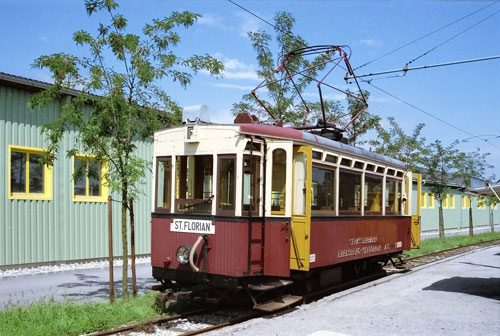
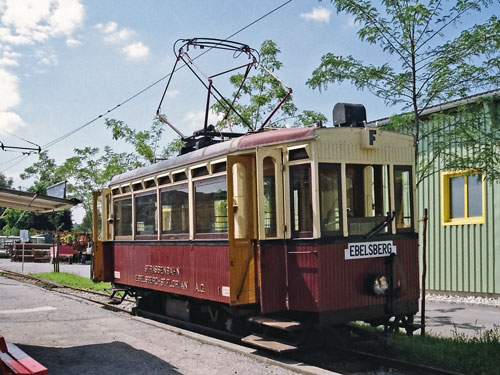
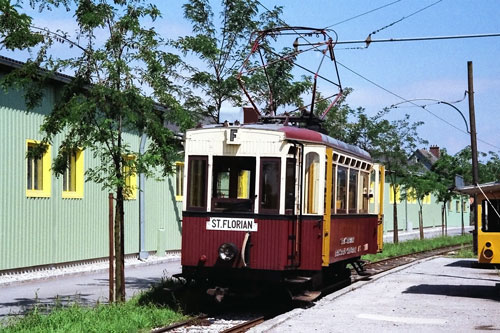
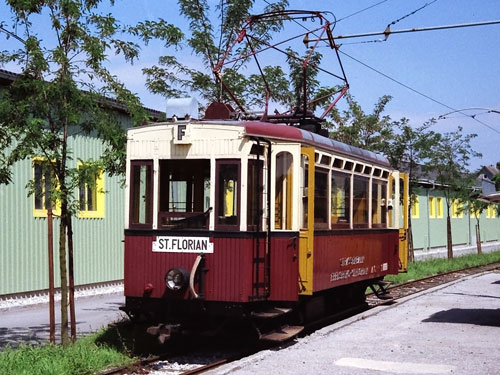
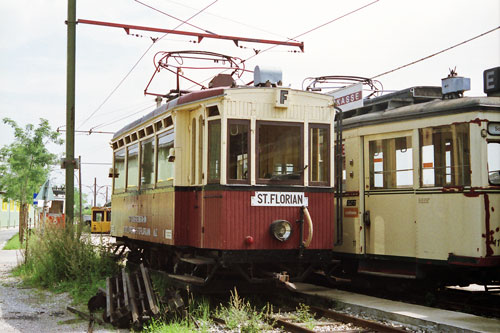
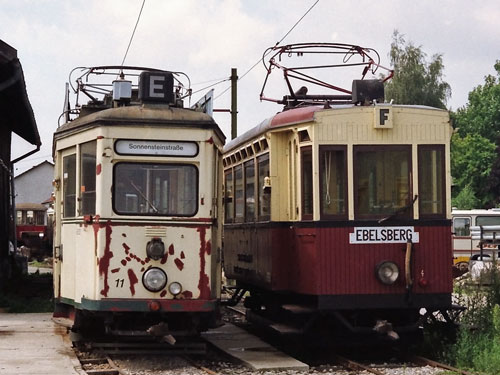
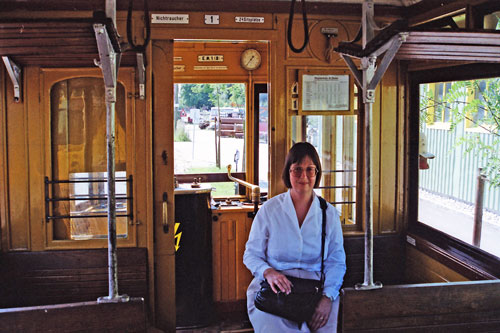
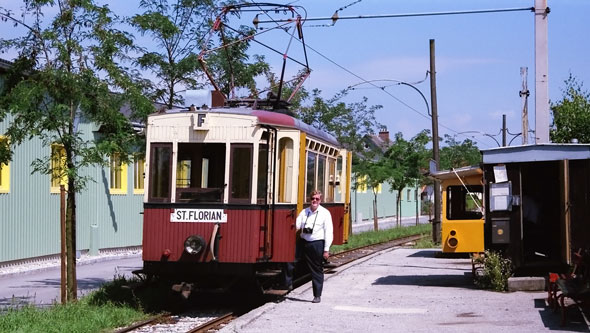
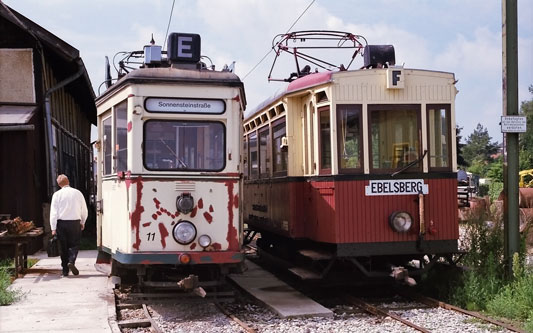
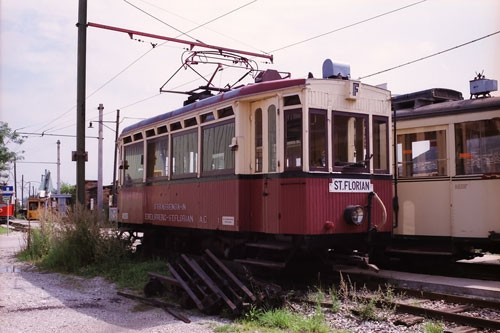
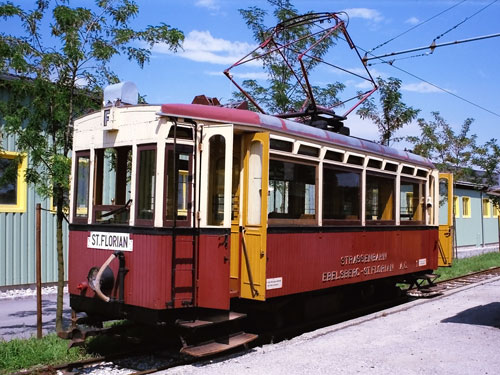
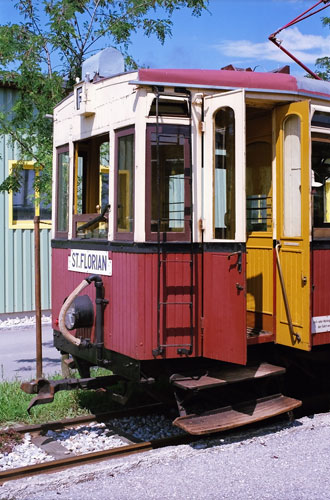
Tram EM 1 on the Florianerbahn
at the Pichling terminus, with Gmunden No.7
Photos: ©1989 Ian Boyle
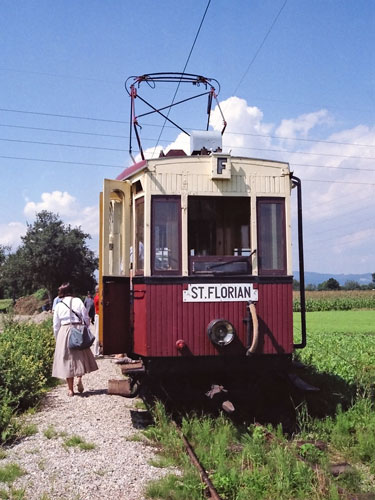
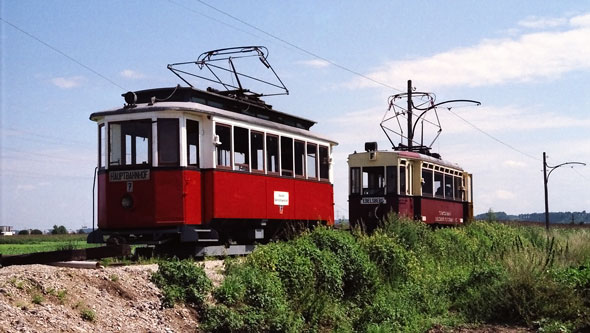
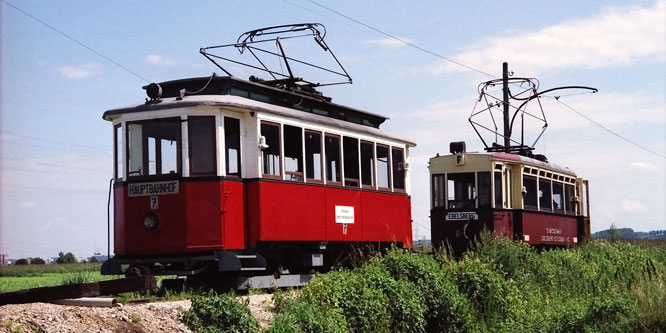
Five matching Graz trailers numbered EP 1-5 were delivered in 1912-13. EP
1-3 were renumbered EB 20224, 20222 and 20223 in 1974 and supposedly moved elsewhere
within the Stern & Hafferl organisation. However EP3 was still on the
railway as shown in the picture below. EP1 was regauged to 1000mm and was
working on the Attergaubahn on
our visit there on the same holiday. EP4 was rebuilt in 1951 and also
remained on the railway as shown below. EP5 was also rebuilt and retained
but I did not see it.
I have no idea why I did not take closer pictures of the trailers than the
one shown below.
Trailers EP3 and EP4 at the
Pickling terminus
Photo: ©1989 Ian Boyle
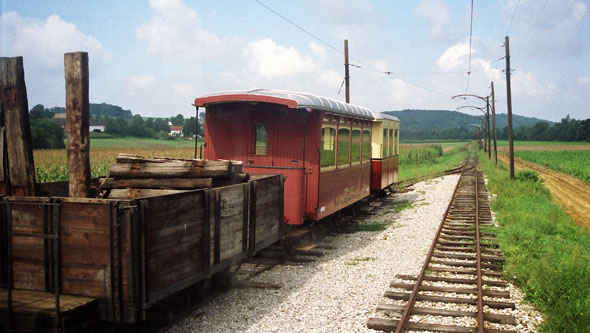
Trailer EP1 rebuilt to metre
gauge and running at Attersee
Photo: ©1989 Ian Boyle
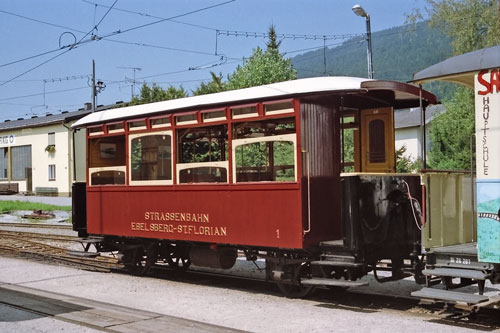
Museum Rolling Stock From Other Systems
Gmunden GM7 has an interesting history since it was
built as SM1 for another Stern & Hafferl tramway linking Unterach on
Attersee and See on Mondsee, both of which lakes had steamer services. This
tramway closed in 1949 and SM1 passed to the Gmundner Strassenbahn as GM7,
where it worked until 1977. It was leased to the ÖGEG from 1979. It would
have required re-gauging to 900mm to run at St Florian. It was one of three
serviceable vehicles in 1989.
Gmunden GM7 at St Florian
Photos: ©1989 Ian Boyle
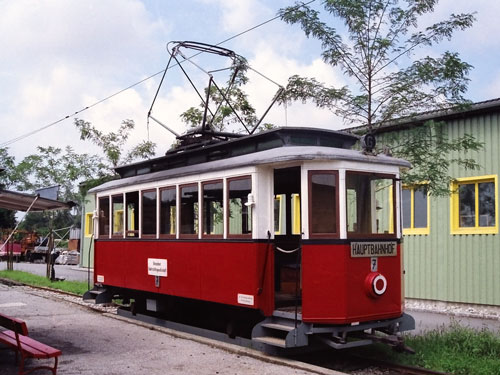
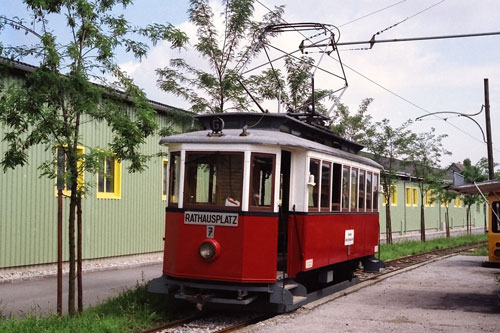
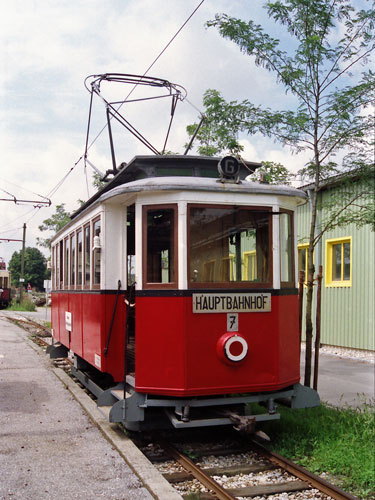
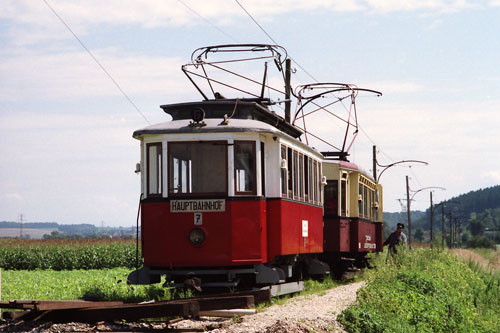


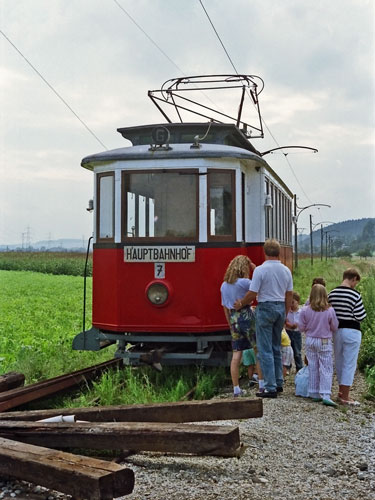
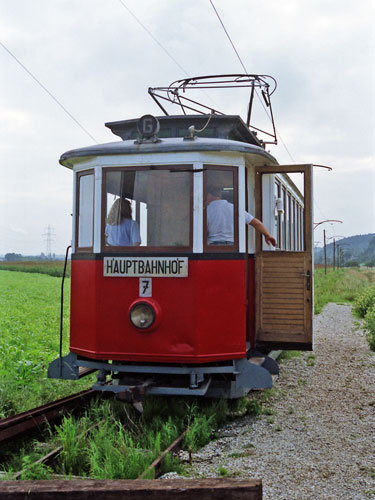
Gmunden GM7 on the Museumbahn St Florian
Photos: ©1989 Margaret Boyle
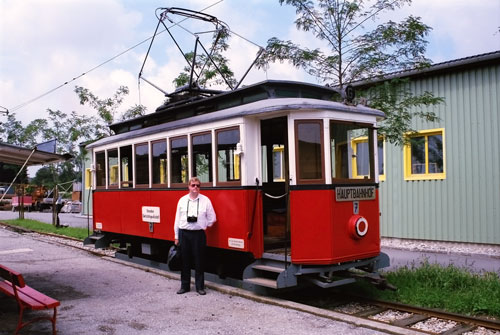
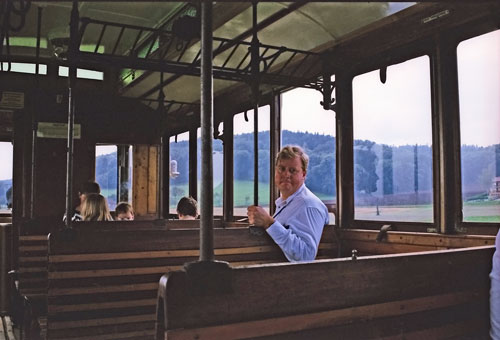
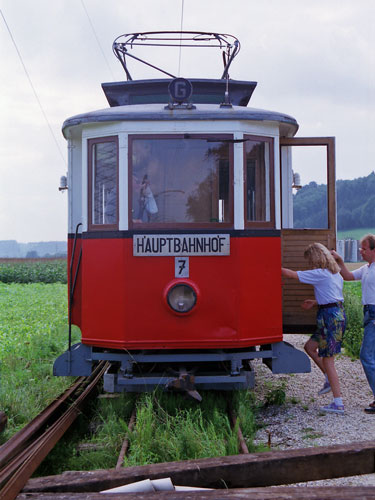
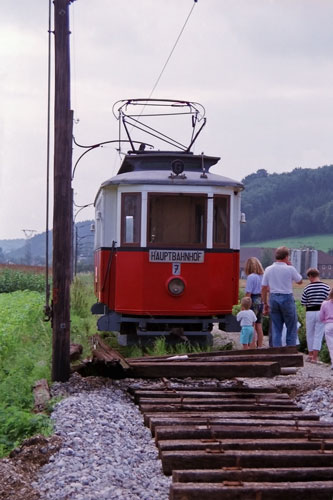
The Pöstlingbergbahn received new enclosed cars XI-XVIII, built by ESG (Linzer Elektrzitäts, Ferwärme &
Verkehrsbetriebe), between 1948-58. No.XIII was transferred in 1979 to the
ÖGEG to run on Museumbahn-St Florian where its double-flanged wheels were
re-profiled and re-gauged to 900mm, and its rail clasp brakes were replaced
with magnetic track brakes. It was one of three serviceable vehicles in
1989.
Pöstlingbergbahn tram No.XIII at the Pichling
'terminus' of the Museumbahn St Florian
Photos: ©1989 Ian & Margaret Boyle
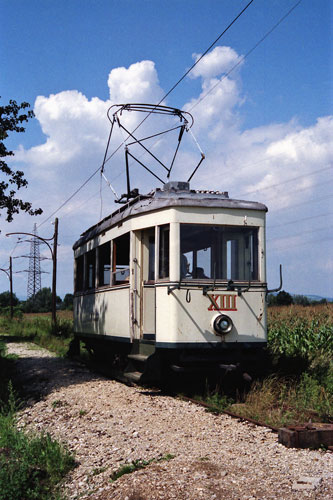
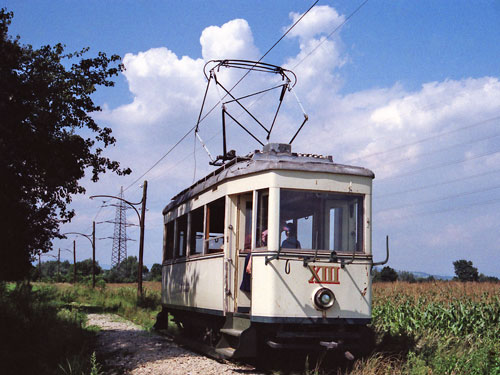
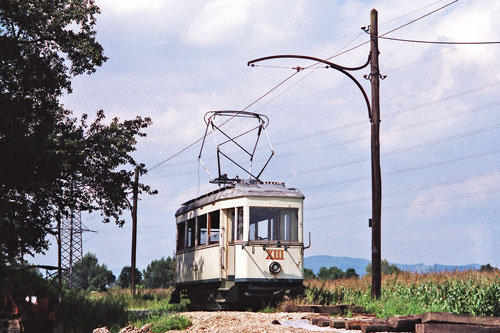
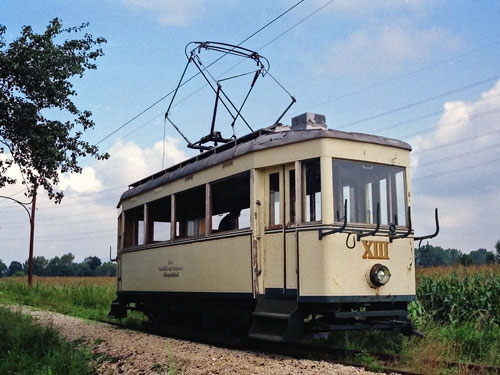
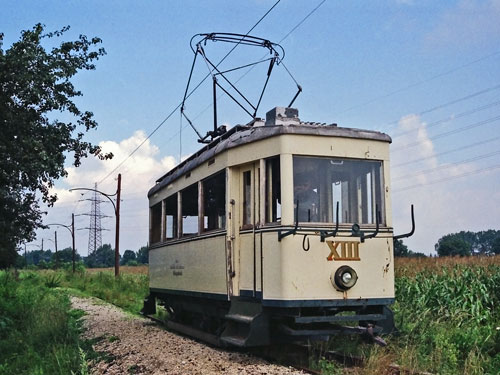
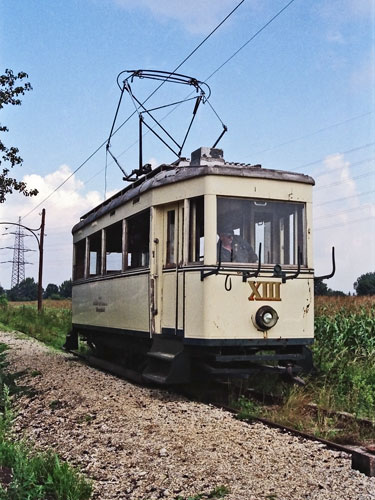
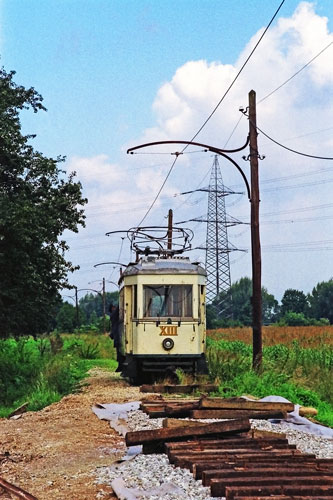
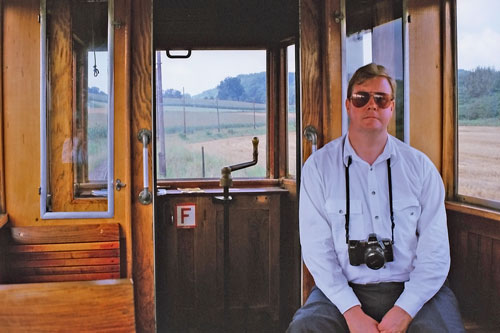
A number of ex-Linz two-axle trams were acquired by
the ÖGEG to run on Museumbahn-St Florian.
Linz tram No.11 on the Museumbahn St Florian with EM1
Photos: ©1989 Ian Boyle
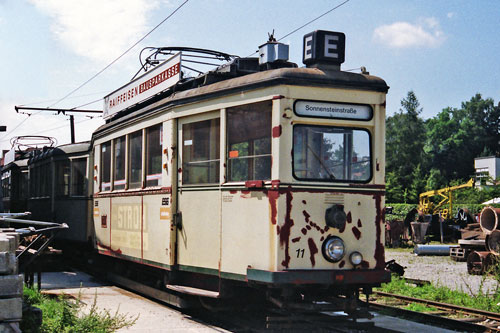
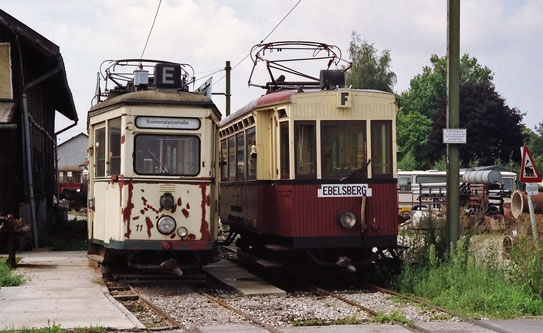


Linz tram No.32 on the Museumbahn St Florian with an
unidentified trailer
Photo: ©1989 Ian Boyle
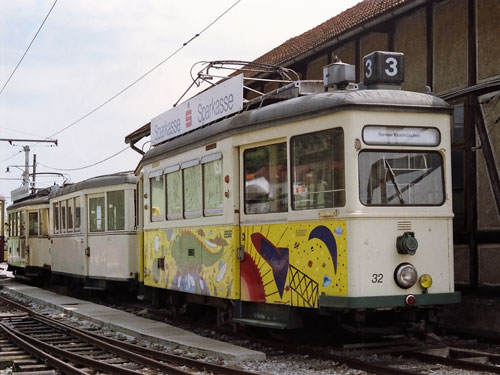
Pichling terminus
Photos: ©1989 Ian Boyle


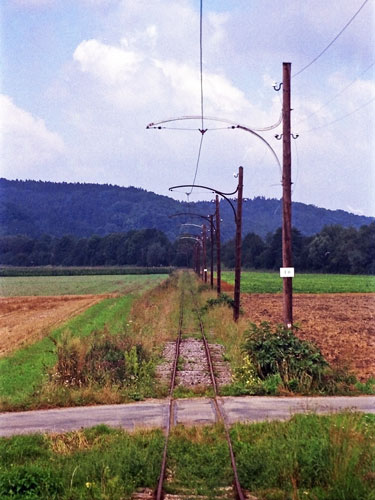



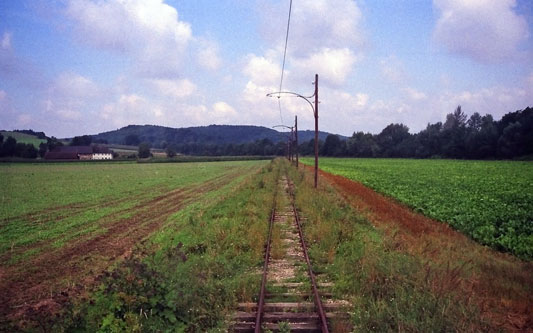
The composer Anton Bruckner (1824–96) was a choirboy
and later organist at St Florian Abbey, and is buried beneath the organ inside the monastic
church
Museumbahn St Florian Gift Shop
Photos: ©1989 Margaret Boyle
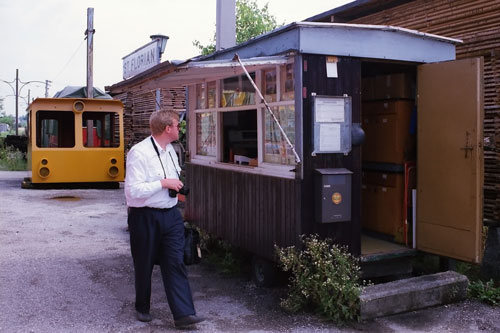
St Florian Abbey
Photos: ©1989 Margaret Boyle
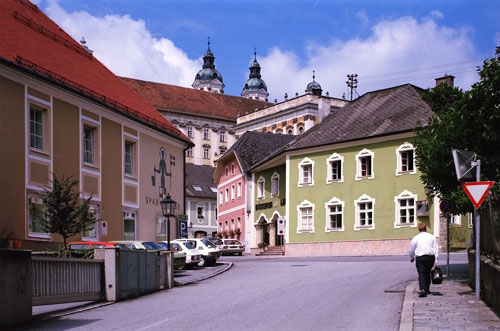
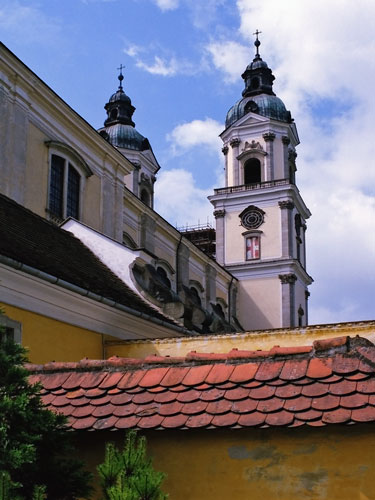
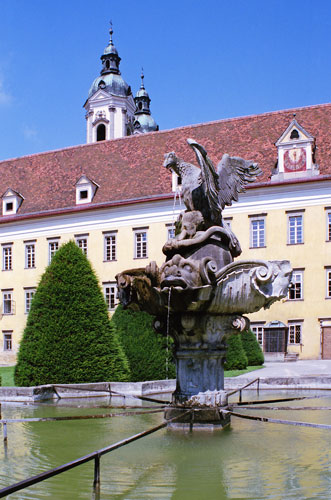
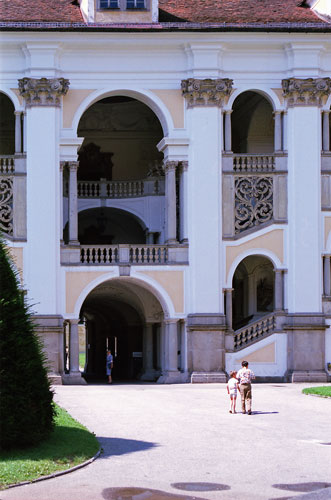
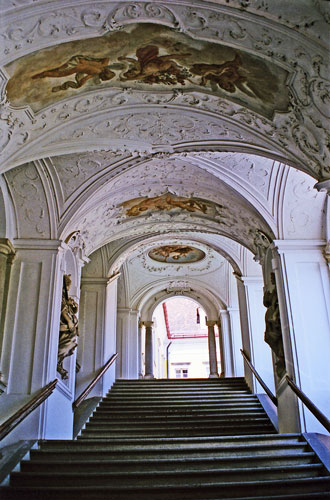
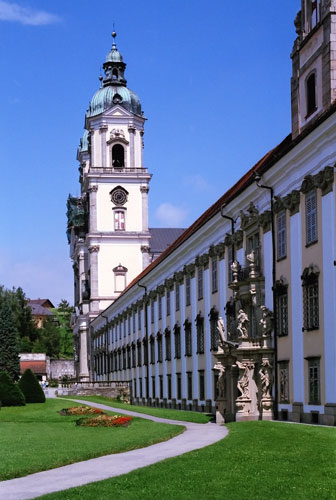
St Florian Abbey
Photos: ©1989 Ian Boyle
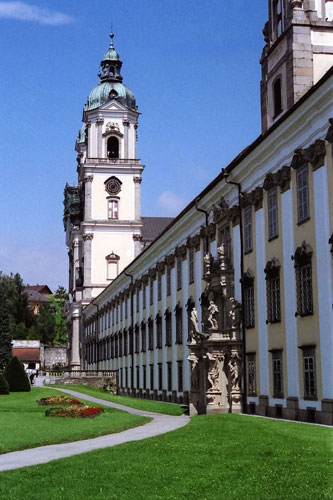
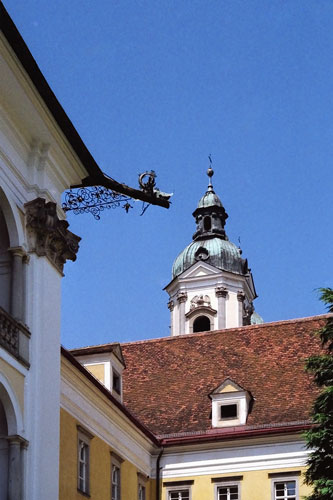
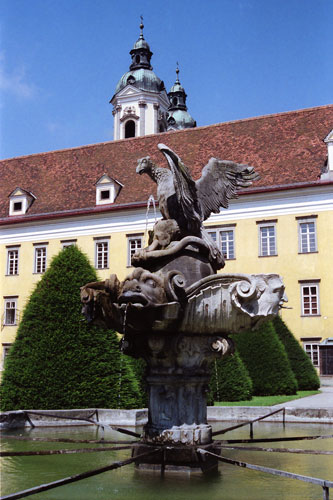
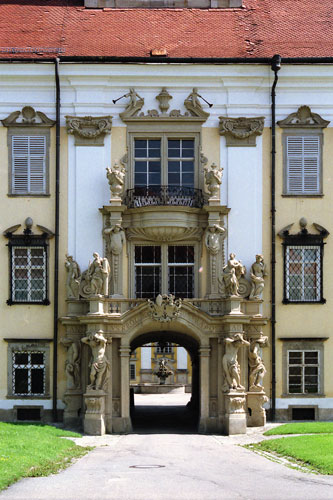
St Florian Abbey dominates the local town
Photo: ©Greg Kraftschik (wiki commons)
